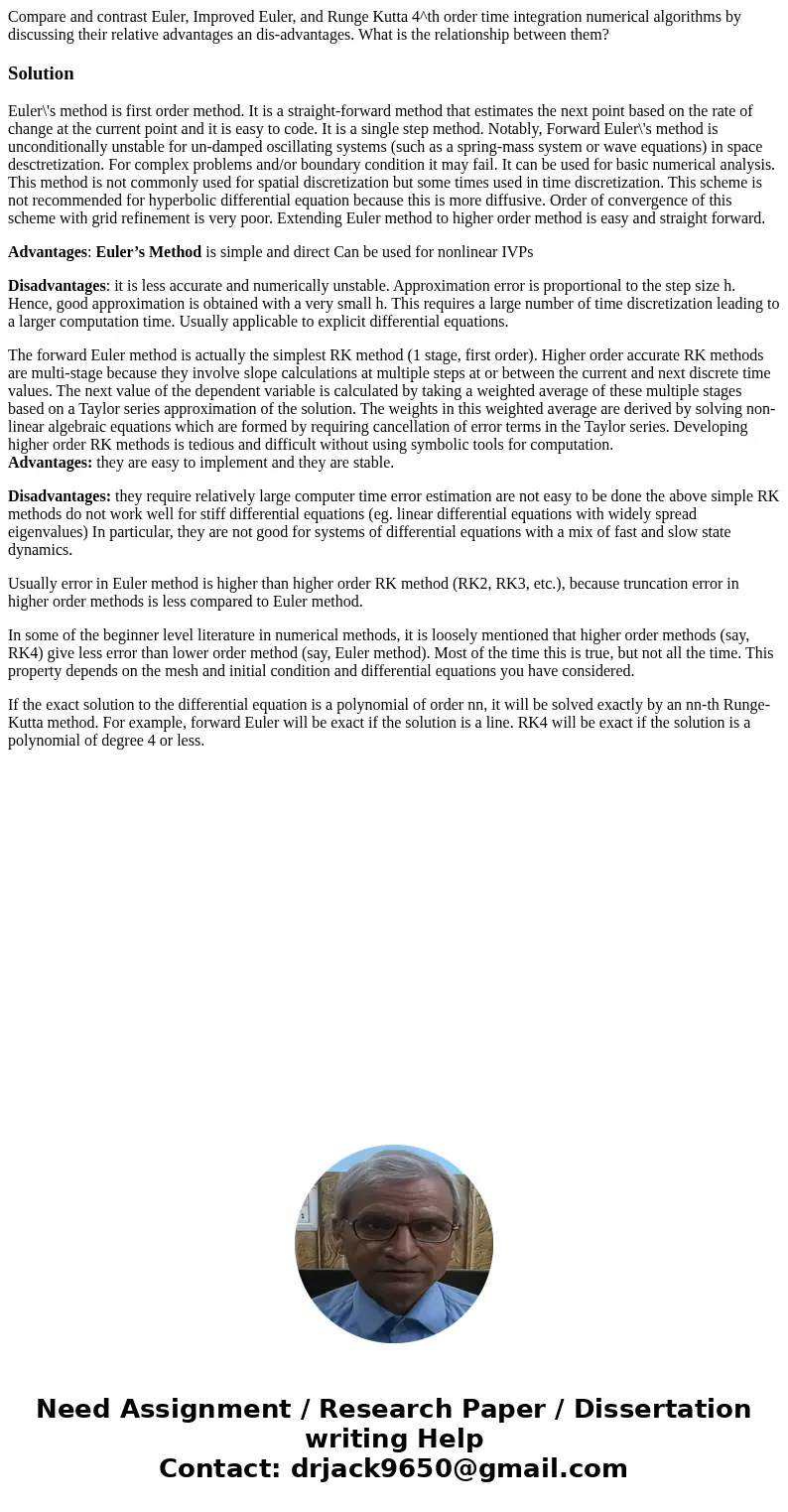Compare and contrast Euler Improved Euler and Runge Kutta 4t
Solution
Euler\'s method is first order method. It is a straight-forward method that estimates the next point based on the rate of change at the current point and it is easy to code. It is a single step method. Notably, Forward Euler\'s method is unconditionally unstable for un-damped oscillating systems (such as a spring-mass system or wave equations) in space desctretization. For complex problems and/or boundary condition it may fail. It can be used for basic numerical analysis. This method is not commonly used for spatial discretization but some times used in time discretization. This scheme is not recommended for hyperbolic differential equation because this is more diffusive. Order of convergence of this scheme with grid refinement is very poor. Extending Euler method to higher order method is easy and straight forward.
Advantages: Euler’s Method is simple and direct Can be used for nonlinear IVPs
Disadvantages: it is less accurate and numerically unstable. Approximation error is proportional to the step size h. Hence, good approximation is obtained with a very small h. This requires a large number of time discretization leading to a larger computation time. Usually applicable to explicit differential equations.
The forward Euler method is actually the simplest RK method (1 stage, first order). Higher order accurate RK methods are multi-stage because they involve slope calculations at multiple steps at or between the current and next discrete time values. The next value of the dependent variable is calculated by taking a weighted average of these multiple stages based on a Taylor series approximation of the solution. The weights in this weighted average are derived by solving non-linear algebraic equations which are formed by requiring cancellation of error terms in the Taylor series. Developing higher order RK methods is tedious and difficult without using symbolic tools for computation.
Advantages: they are easy to implement and they are stable.
Disadvantages: they require relatively large computer time error estimation are not easy to be done the above simple RK methods do not work well for stiff differential equations (eg. linear differential equations with widely spread eigenvalues) In particular, they are not good for systems of differential equations with a mix of fast and slow state dynamics.
Usually error in Euler method is higher than higher order RK method (RK2, RK3, etc.), because truncation error in higher order methods is less compared to Euler method.
In some of the beginner level literature in numerical methods, it is loosely mentioned that higher order methods (say, RK4) give less error than lower order method (say, Euler method). Most of the time this is true, but not all the time. This property depends on the mesh and initial condition and differential equations you have considered.
If the exact solution to the differential equation is a polynomial of order nn, it will be solved exactly by an nn-th Runge-Kutta method. For example, forward Euler will be exact if the solution is a line. RK4 will be exact if the solution is a polynomial of degree 4 or less.

 Homework Sourse
Homework Sourse